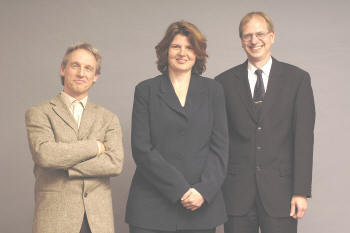In the pantheon of scientific disciplines, astrophysics stands out, captivating the imagination of both scholars and the general populace alike. The vast expanse of the cosmos, with its myriad celestial bodies and phenomena, invites exploration and inquiry. An emerging trend within this field is the emphasis on outreach projects, which endeavor to bridge the gap between complex scientific concepts and public understanding. Recently, an astrophysics project garnered significant recognition, underscoring the impact of educational initiatives aimed at demystifying the universe.
This particular outreach initiative focused on disseminating astrophysical knowledge through interactive platforms, allowing participants to engage with fundamental principles of the universe. It harnessed innovative methodologies, such as guided stargazing sessions, hands-on experiments, and multimedia presentations that amalgamated scientific rigor with engaging storytelling. Such strategies have been shown to significantly enhance retention and stimulate interest among diverse demographics, from schoolchildren to adults seeking to enrich their understanding of the cosmos.
The sheer immensity of the universe is a common observation that evokes a sense of wonder and curiosity. This fascination might stem from a deep-seated human inclination to comprehend one’s place in the grand tapestry of existence. Starry nights inspire contemplation about the unknown, while the intricate workings of galaxies, black holes, and cosmic events challenge the boundaries of human understanding. This intrinsic desire for knowledge is a driving force behind both individual and collective scientific inquiry. Understanding astrophysics not only informs us about the physical universe but also prompts philosophical reflections on questions of existence, time, and the nature of reality itself.
Astrophysics outreach serves as a conduit for exploring these profound themes. It encourages participants to grapple with complex questions regarding the universe’s origins and evolution. The Big Bang theory, black holes, and dark matter are no longer esoteric concepts confined to academic journals; instead, they become accessible, relatable, and tangible, thanks to community engagement initiatives. The use of local venues, such as planetariums, schools, and public parks, further amplifies the reach, ensuring that astrophysical knowledge transcends traditional barriers.
Community involvement is essential in these outreach projects. By fostering partnerships with local educational institutions, museums, and scientific organizations, these initiatives capitalize on a collective expertise while also pooling resources. This collaborative approach not only enhances the quality and impact of the programs but also instills a sense of ownership within the community. When individuals see their peers—scientists, educators, and enthusiasts—engaging in dialogue about astrophysical phenomena, it cultivates a culture of curiosity and lifelong learning.
Moreover, the integration of technology in these outreach endeavors has proven to be transformative. The proliferation of digital tools, such as interactive simulations and virtual reality experiences, has the potential to revolutionize how astrophysics is taught and perceived. These tools allow participants to visualize complex concepts, such as the curvature of space-time or the lifecycle of stars. By immersing individuals in simulated astrophysical environments, such as navigating the Milky Way or observing celestial events from distant planets, engagement is heightened, thereby fostering an enduring appreciation for the complexities of the universe.
However, it is imperative to recognize the challenges and barriers that persist within the realms of science communication and education. Misconceptions about astrophysics can proliferate easily, often fueled by sensationalism in media or an innate resistance to challenging established beliefs. Skepticism surrounding scientific findings can deter continued public interest. Thus, astrophysics outreach must be not only informative but also persuasive, working to cultivate critical thinking and scientific literacy. The goal is not merely to impart knowledge but to empower individuals to engage with scientific discourse actively, enabling them to discern credible information from misinformation.
Additionally, the demographic variability of participants necessitates a nuanced approach to outreach. Cultural contexts and individual backgrounds significantly shape receptivity to scientific ideas. By recognizing and respecting these variances, outreach programs can tailor their initiatives accordingly. Instructional materials, language used, and the presentation of scientific concepts must resonate with diverse audiences, fostering inclusivity and investment in the subject matter.
Ultimately, the recognition bestowed upon this particular astrophysics outreach project highlights a broader paradigm shift within the scientific community. The elevation of public engagement activities is indicative of an acknowledgment that meaningful science communication is vital for fostering a scientifically literate society. Engendering public interest in astrophysics will not only enhance understanding but also inspire the next generation of scientists, engineers, and informed citizens capable of contributing to discussions about the future of science and technology.
As outreach initiatives continue to evolve, reflecting societal needs and advancements in technology, it is crucial to remain steadfast in the pursuit of educational excellence. The intersection of enthusiasm for science with community-focused outreach can cultivate an enduring legacy, where the fundamental principles of astrophysics resonate across generations. By demystifying the cosmos, these projects not only enlighten minds but also cultivate an appreciation for the elegance and wonder of the universe, ensuring that the pursuit of knowledge remains a cornerstone of human endeavor.










